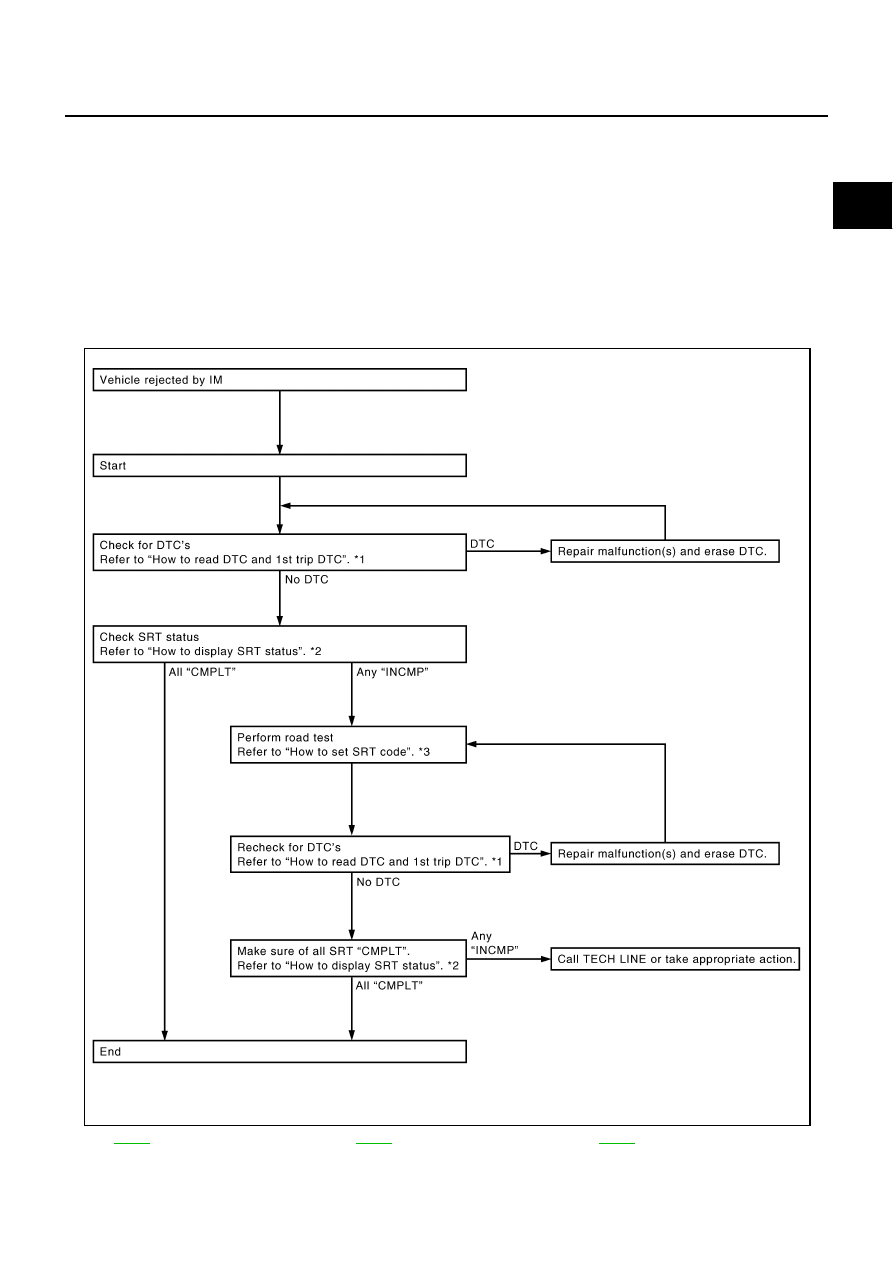Nissan Murano Z50 (2007 year). Manual - part 69

ON BOARD DIAGNOSTIC (OBD) SYSTEM
EC-53
C
D
E
F
G
H
I
J
K
L
M
A
EC
Revision: 2006 July
2007 Murano
●
The SRT will indicate “CMPLT” at the time the respective self-diagnoses have one (1) OK result.
●
The emissions inspection requires “CMPLT” of the SRT only with OK self-diagnosis results.
●
When, during SRT driving pattern, 1st trip DTC (NG) is detected prior to “CMPLT” of SRT, the self-diagno-
sis memory must be erased from ECM after repair.
●
If the 1st trip DTC is erased, all the SRT will indicate “INCMP”.
NOTE:
SRT can be set as “CMPLT” together with the DTC(s). Therefore, DTC check must always be carried out
prior to the state emission inspection even though the SRT indicates “CMPLT”.
SRT Service Procedure
If a vehicle has failed the state emissions inspection due to one or more SRT items indicating “INCMP”, review
the flowchart diagnostic sequence on the next page.
*1
*2
*3
PBIB2320E